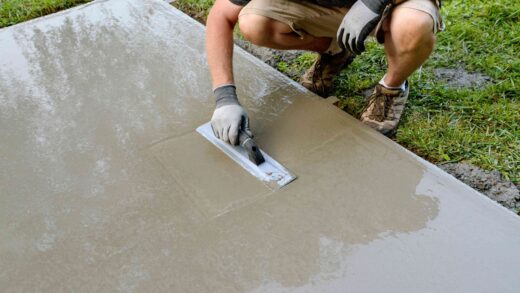There are many types of, which can be broadly divided into three categories: slab foundations and poured concrete foundations. The only viable option for foundations was to use large slabs, either concrete, timber, or concrete with steel posts, footings, in the past. In most cases, large slabs alone would not be the ideal foundation, as they would be very difficult to manage.
The slab foundations are made up of tubes of earth that are pushed into the ground with steel rods. The earth is driven or pushed into the ground using steel pins and ties. They are then poured or cured and become the foundation on which the building is built. A special type raft known as a float is laid directly onto the raft. The float foundations are usually used on areas that are difficult to dig and therefore cost more to build.
Concrete foundations are made using a mixture of concrete slabs and steel.
Concrete is poured into the structure when it is partially finished, usually on a raised surface. After the concrete has cured and hardened, a heavy drum is placed on top of the foundation drum. The drum is then raised into soil at the foundation edge. The drum is then dropped into the soil to spread the concrete evenly over the floor. This supports the structure and also helps with soil softening.
The fourth type is a wall. This is the most widely used type of structure in residential and commercial buildings today. A concrete wall is a frame made of concrete that is used to support a building or other structure. It is important that you have a rigid, strong wall that is durable and cost-effective. In many cases, a concrete wall must be poured on site before it can be erected, which requires a fairly large amount of excavation, as well as workers that are skilled in the erection of walls.

Crawlspace foundations are the fifth most common type of foundation. These foundations are used in areas that are not accessible for mechanical equipment such as underground pipes. Crawlspace foundations have a soil base that has been compacted enough that it can create a deep pit that allows for the installation footings below the soil. To ensure that the crawlspace foundations are strong and durable, most homeowners prefer to have them built by professionals.
The foundations that follow are quite different from the previous ones.
Concrete is the foundation of the three types we will be discussing. For these types of foundations, concrete must be poured to the depth required and once set, it is relatively impervious to the effects of weather. There are many advantages to the use of concrete as a foundation, but the most common reasons people choose deep foundations are because they do not involve excavating, they are inexpensive, and they are durable.
If you are looking to have some sort of customized foundation melbourne underpinning installed, you may want to consider the installation of various types of poured foundations. For example, if you have a historic home, or a home that has a distinct architectural style, you may want to install one of the different types of poured foundations that are available to you. Forged or reinforced concrete is popular because it can mimic the unique architectural styles from past generations. These foundation systems are popular in older homes, and they work! There are many different types of poured bases that can be used to build any type of structure, and many are very affordable.
Concrete masonry units can also be used for house foundations. These units are very similar to poured foundations and have some similarities with poured foundations. Concrete masonry units can be poured into place and then left to dry. This can sometimes take weeks or months. This type of foundation is popular for commercial buildings and office buildings that require additional support. It is also popular for residential homes that require additional stability and are located outdoors, where inclement weather conditions can be more likely to affect the basement.



